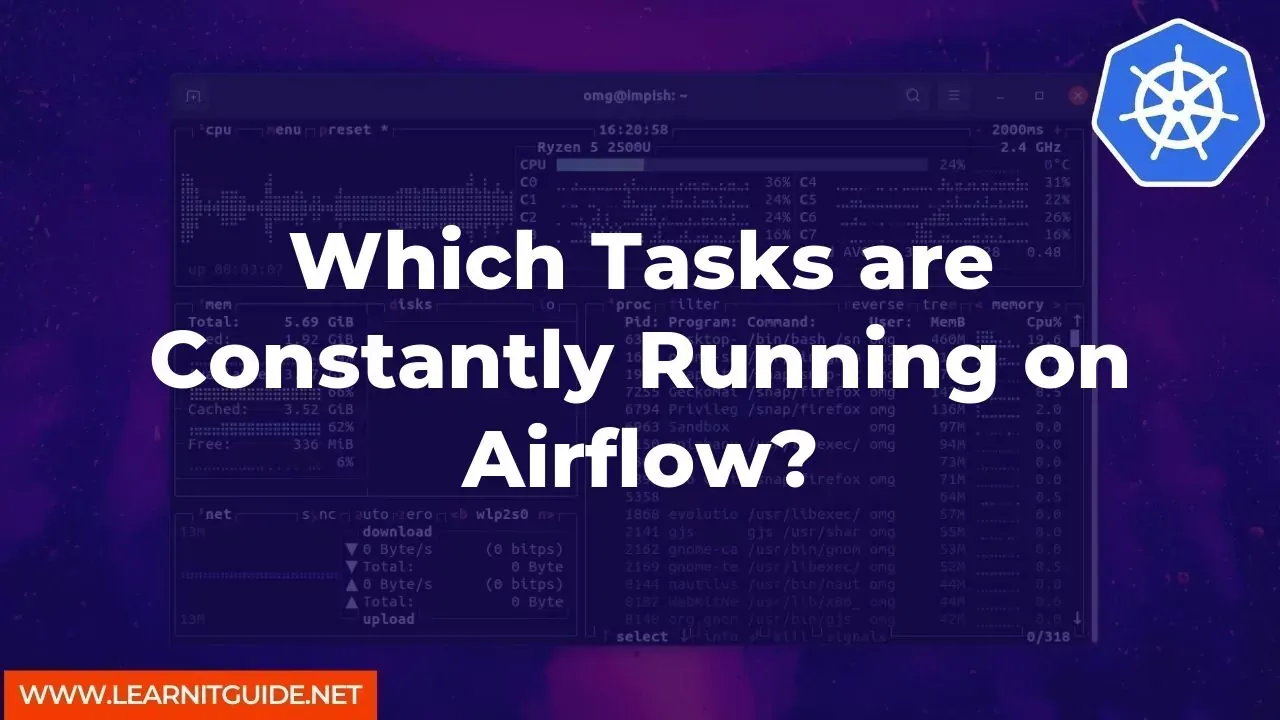Airflow is a popular open-source platform for workflow management, which enables you to automate and schedule complex data pipelines. It provides a simple and efficient way to define, schedule, and monitor your workflows, making it a must-have tool for any data-driven organization. Airflow runs various types of tasks to manage these workflows efficiently.
In this article, we will discuss which tasks are constantly running on Airflow.
Scheduler:
The scheduler is the heart of Airflow. It's responsible for managing the workflows by scheduling and triggering the tasks. It checks for the task dependencies and executes them in the correct order. The scheduler also ensures that the tasks are executed on time and updates the status of each task in the metadata database.Workers:
Workers are the distributed components of Airflow that execute the tasks scheduled by the scheduler. These workers can be deployed on different machines, which allows you to scale your workflows easily. Each worker runs the tasks assigned to it and updates the status of the tasks in the metadata database.Executors:
Executors are responsible for executing the tasks in parallel. Airflow supports several executors such as LocalExecutor, SequentialExecutor, CeleryExecutor, and more. Each executor has its advantages and disadvantages, and you can choose the one that fits your use case.DAGs:
Directed Acyclic Graphs (DAGs) are the workflows in Airflow. DAGs define the structure of the workflow, the tasks, and their dependencies. They are written in Python and can be version-controlled like any other code. The DAGs are loaded into Airflow's metadata database and are used by the scheduler to schedule and trigger the tasks.Sensors:
Sensors are tasks that wait for a particular event to occur before proceeding with the next task in the workflow. They can wait for a file to be created, a message to arrive in a queue, or a web page to be updated. Sensors are essential for building reliable and fault-tolerant workflows.Operators:
Operators are the individual tasks that perform the work in Airflow. They can be simple tasks like running a SQL query or more complex tasks like running a machine learning model. Airflow comes with a broad range of built-in operators that you can use to build your workflows.Plugins:
Plugins are third-party extensions to Airflow that add additional functionality to the platform. They can be used to integrate Airflow with other tools, add new operators, or provide new sensors. Airflow has a vibrant community of developers who are continuously developing new plugins.
Airflow is a versatile platform that can handle a wide range of workflows. The tasks discussed in this article are the essential components of Airflow that ensure that the workflows are executed efficiently and reliably. Understanding these tasks is essential for building complex data pipelines with Airflow.
Related Searches and Questions asked:
That's it for this post. Keep practicing and have fun. Leave your comments if any.








0 تعليقات